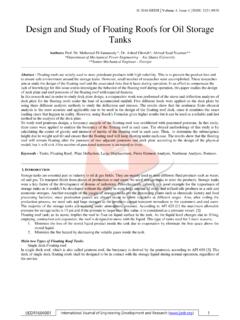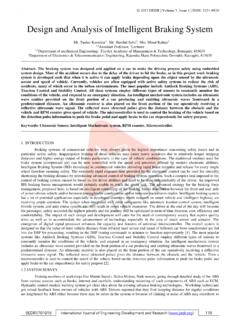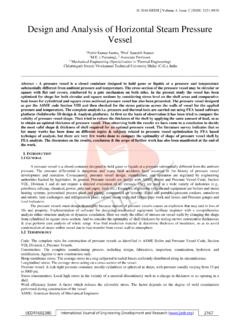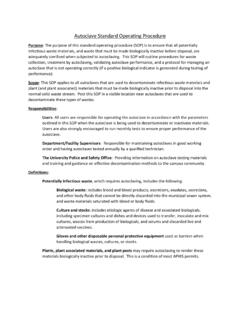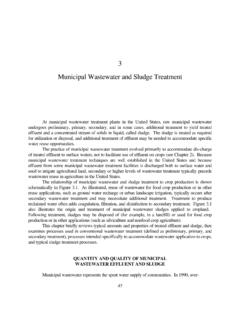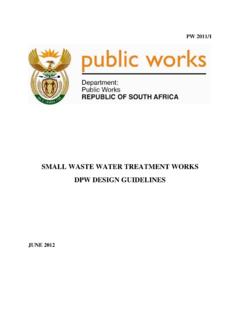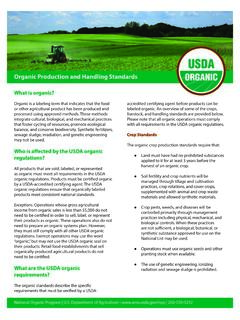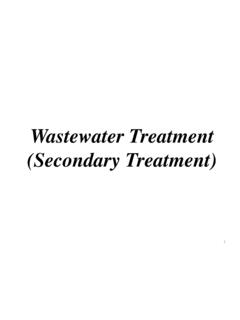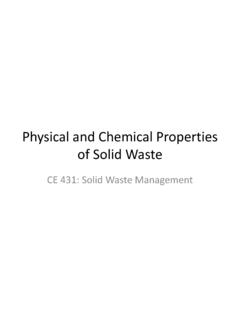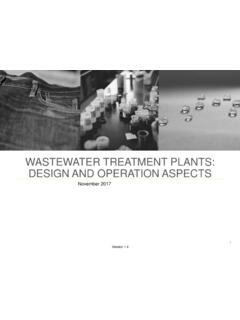Transcription of Activated Sludge Treatment Process Concept and ... - IJEDR
1 2016 IJEDR | Volume 4, Issue 2 | ISSN: 2321-9939 IJEDR1602156 International Journal of Engineering Development and Research ( ) 890 Activated Sludge Treatment Process Concept and System Design Dr. Akshey Bhargava, Professor ( , , LLB) Department of Civil Engineering Global Institute of Engineering and Technology, Hyderabad, India _____ Abstract - Activated Sludge Treatment is a biological wastewater Treatment Process which speeds up waste decomposition by adding Activated Sludge into wastewater, and the mixture is aerated and agitated for a specified amount of time there by allowing the Activated Sludge to settle out by sedimentation and is disposed of (wasted) or reused (returned to the aeration tank).
2 It is to everyone s advantage for a community to be able to treat its wastewater in the most economical way. The Activated Sludge Process has the advantage of producing a high quality effluent for a reasonable operating and maintenance costs. The Activated Sludge Process uses microorganisms to feed on organic contaminants in wastewater, producing a high-quality effluent. The basic principle behind all Activated Sludge processes is that as microorganisms grow, they form particles that clump together. These particles (floc) are allowed to settle to the bottom of the tank, leaving a relatively clear liquid free of organic material and suspended solids.
3 An attempt has been made in the present paper to explain and conceptualize designed parameters relevant to Activated Sludge Treatment Process . _____ I. INTRODUCTION Activated Sludge is a Sludge particles reduced in wastewater by the growth of organisms in aeration tanks. The term Activated comes from the fact that the particles teem with bacteria, fungi, and protozoa and is different from primary Sludge in the sense that the Sludge particles contain many living organisms that can feed on the incoming wastewater. Described simply, screened wastewater is mixed with varying amounts of recycled liquid containing a high proportion of organisms taken from a secondary clarifying tank, and it becomes a product called mixed liquor.
4 This mixture is stirred and injected with large quantities of air, to provide oxygen and keep solids in suspension. After a period of time, mixed liquor flows to a clarifier where it is allowed to settle. A portion of the bacteria is removed as it settles, and the partially cleaned water flows on for further Treatment . The resulting settled solids, the Activated Sludge , are returned to the first tank to begin the Process again. Today a number of variations of the basic Process have been developed. This issue of Pipeline includes descriptions of three of the most common variations: Extended aeration, sequencing batch reactors, and oxidation ditches.
5 The Activated Sludge plant is the most popular biological Treatment Process for larger installations. A glossary of terms that are used in Activated Sludge Process is reflected as under: Aerobic a condition where oxygen is present BOD biological oxygen demand. Measure of oxygen organic material in the water requires. Bulking Sludge that forms clouds in the secondary clarifiers when the Sludge does not settle properly, usually caused by filamentous bacteria F: M Food to microbe ratio Floc clumps of bacteria Flocculation agitating wastewater to induce the small, suspended particles to bunch together into heavier particles (floc) and settle out.
6 Loading - a quantity of material added to the Process at one time MLSS mixed-liquor suspended solids MLVSS volatile mixed-liquor suspended solids Mixed liquor Activated Sludge mixed with raw wastewater Package plant pre-manufactured Treatment facility small communities or individual properties use to treat wastewater SRT solids retention time Sludge the solids that settle out during the Process Supernatant the liquid that is removed from settled Sludge . It commonly refers to the liquid between the Sludge on the bottom and the scum on the surface. TSS total suspended solids Wasting removing excess microorganism s small package plants being used today.
7 These plants are capable of producing a high quality effluent for the price. Other advantages of the Activated Sludge Process are the low construction cost and the relatively small land requirement. The Activated Sludge Process is widely used by large cities and communities where large volumes of wastewater must be highly treated economically. Activated Sludge Process plants are good choices too for isolated facilities, such as hospitals or hotels, cluster situations, subdivisions, and small communities. 2016 IJEDR | Volume 4, Issue 2 | ISSN: 2321-9939 IJEDR1602156 International Journal of Engineering Development and Research ( ) 891 II.
8 THE Process A basic Activated Sludge Process consists of several interrelated components: An aeration tank where the biological reactions occur An aeration source that provides oxygen and mixing A tank, known as the clarifier, where the solids settle and are separated from treated wastewater A means of collecting the solids either to return them to the aeration tank, (return Activated Sludge [RAS]), or to remove them from the Process ( waste Activated Sludge [WAS]). Aerobic bacteria thrive as they travel through the aeration tank. They multiply rapidly with sufficient food and oxygen.
9 By the time the waste reaches the end of the tank (between four to eight hours), the bacteria has used most of the organic matter to produce new cells. The organisms settle to the bottom of the clarifier tank, water. This Sludge is pumped back to the aeration tank where it is mixed with the incoming wastewater or removed from the system as excess, a Process called wasting. The relatively clear liquid above the Sludge , the supernatant, is sent on for further Treatment as required. III. Sludge CHARACTERISTICS By analyzing the different characteristics of the Activated Sludge or the Sludge quality, plant operators are able to monitor how effective the Treatment plant s Process is.
10 Efficient operation is ensured by keeping accurate, up-to-date records; routinely evaluating operating and laboratory data; and troubleshooting, to solve separating from the clearer problems before they become serious. A wide range of laboratory and visual and physical test methods are recommended. Principally, these include floc and settleability performance using a jar test, microscopic identification of the predominant types of bacteria, and analysis of various chemical parameters. The Treatment environment directly affects microorganisms. Changes in food, dissolved oxygen, temperature pH, and total dissolved solids, Sludge age.



